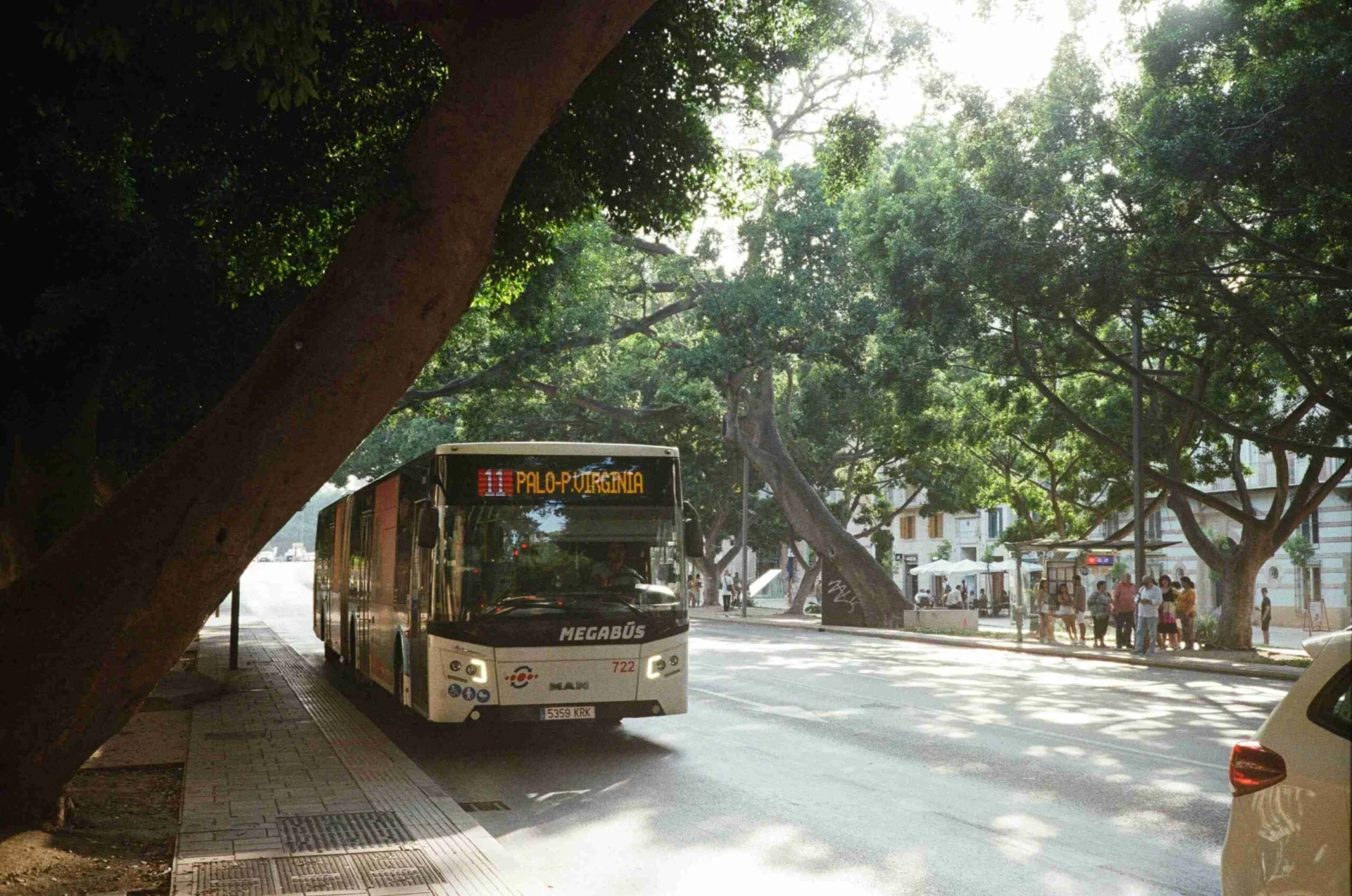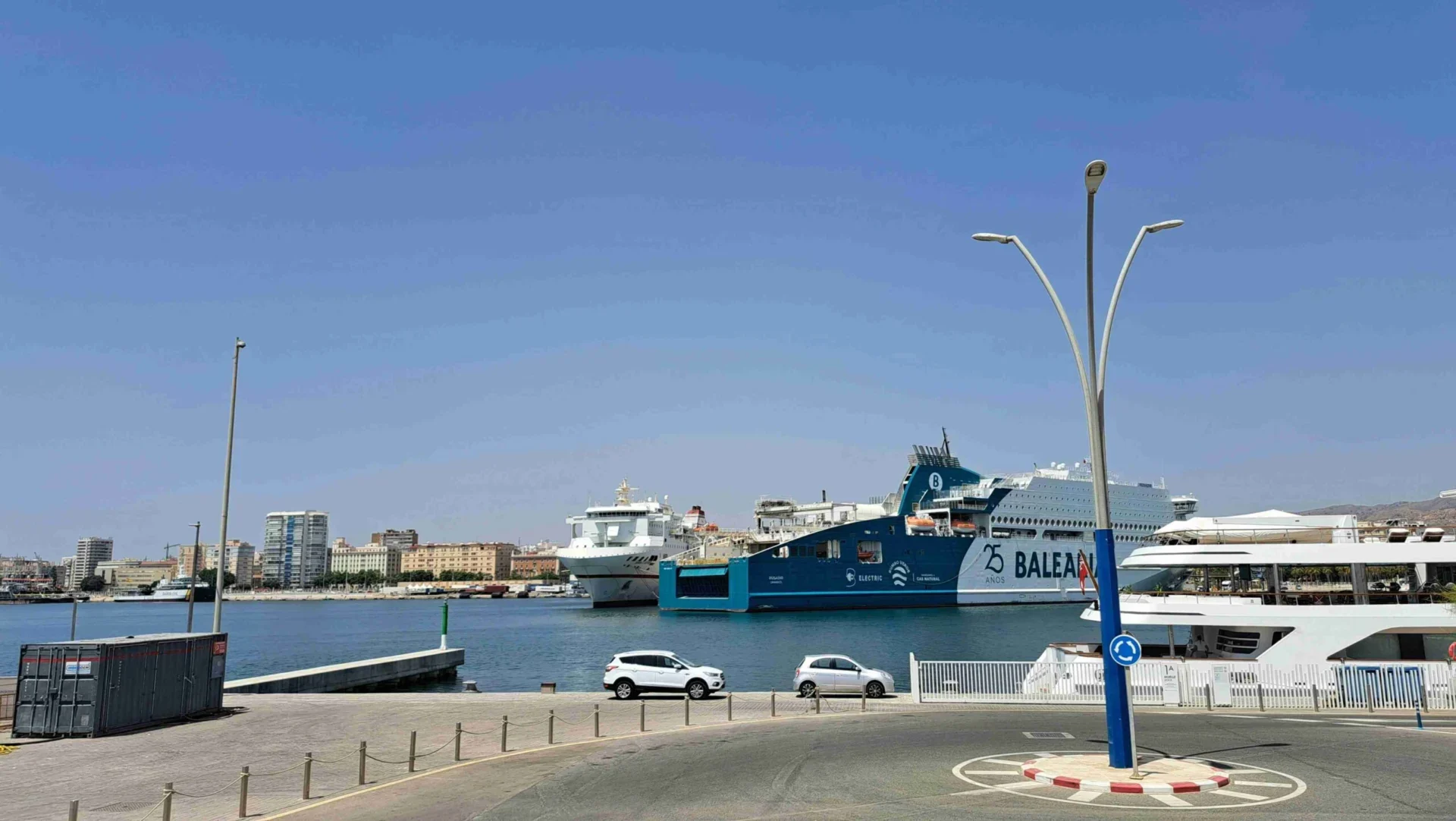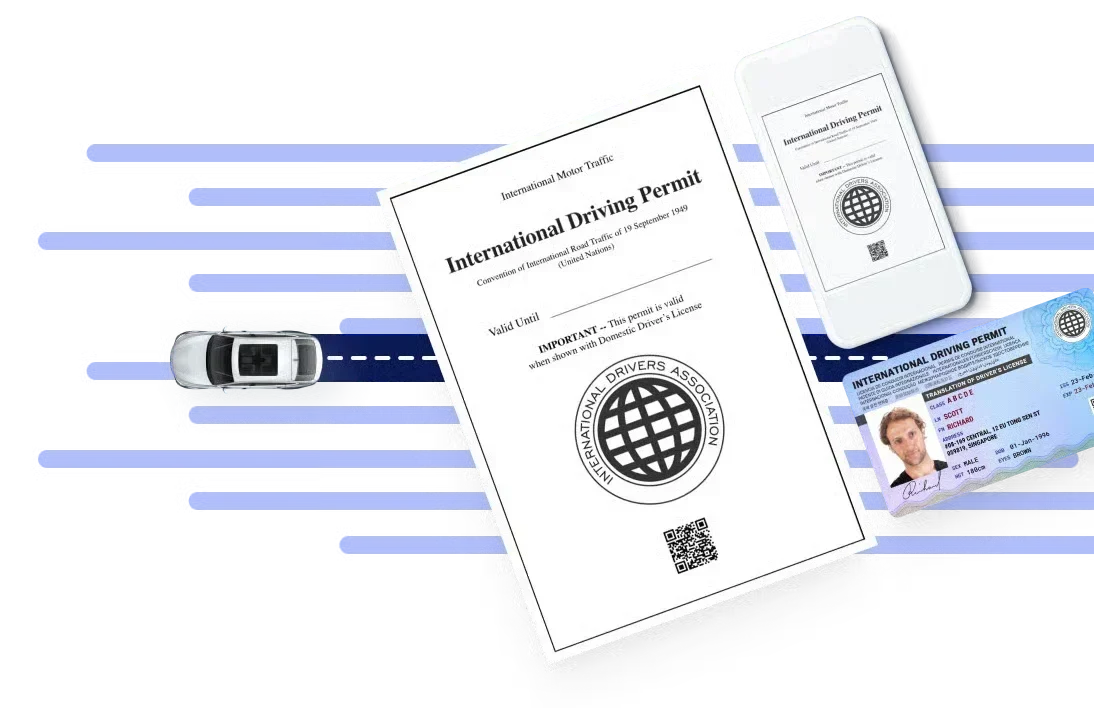Going around Spain using its public transportation system offers a seamless way to discover the country’s vibrant cities and scenic landscapes. With efficient metro systems in Barcelona and Madrid, extensive bus networks connecting cities like Valencia and Seville, and high-speed AVE trains whisking you across Spain , public transport is the best way to get around.
Check if you need an IDP NowWhere was your license issued?
Destination
Whether you’re traveling by bus, train, or tram, Spain’s public transport options provide a convenient and cost-effective way to experience the diverse regions and dynamic cities throughout the country. There are a lot of transportation options in Spain and this article will guide you on using them so you can travel like a local.
Getting Around Spain via the Metro
Spain boasts two expansive metro networks that make navigating its vibrant cities both efficient and straightforward: Madrid Metro and Barcelona Metro.
- Madrid Metro: With over 300 kilometers of track, it is one of the largest metro networks in Europe. It connects the city center with suburbs and key locations, including cultural attractions, business districts, and residential areas. The system has 13 lines, marked by different colors, making navigation straightforward.
- Barcelona Metro: Consists of 12 lines that cover central areas and outlying districts. It provides convenient access to popular attractions such as La Sagrada Familia, Park Güell, and the Gothic Quarter. The metro is known for its punctuality and cleanliness.
Coverage and Schedule
Both cities offer extensive metro networks that cover urban areas and connect to other forms of public transportation, including buses and trams. Trains run frequently, with peak times seeing trains every few minutes, and less frequent service during off-peak hours.
Fares & Payment Options
Fares:
- Single Journey Tickets: Cost between €1.50 and €3.00, with Madrid tickets around €1.70 to €2.00 and Barcelona at about €2.40.
- Multi-Ride Passes: Madrid’s 10-trip “Metrobús” is approximately €12.20; Barcelona’s 10-journey “T-10” costs around €11.35 (being phased out for the T-Casual).
- Travel Cards: Madrid’s 30-day “Abono Transport” starts at €54.60, while Barcelona’s “T-Usual” costs around €40.00 for unlimited travel.
Payment Options:
- Metro Stations: Tickets can be bought at vending machines and counters, accepting cash, cards, and contactless payments.
- Online and Mobile Apps: Purchase and store tickets via official apps or websites, like Barcelona’s TMB app.
- Contactless Payments: Use contactless credit/debit cards or mobile payment apps for easy access.
- Discounted Cards: Barcelona’s T-Casual offers ten journeys at a discount, and the T-Usual provides unlimited travel for a month.


Traveling by Bus in Spain
Spain’s bus system is perfect for exploring urban areas and traveling between cities. City buses in Madrid, Barcelona, Valencia, and Seville cover extensive routes, while intercity services from ALSA and FlixBus connect destinations across Spain and beyond.
City Buses
- Madrid: EMT Madrid operates a vast network covering the city and suburbs, integrated with the metro system.
- Barcelona: TMB manages the bus network, connecting major neighborhoods and attractions, well-coordinated with metro and trams.
- Valencia: EMT Valencia provides comprehensive city coverage and links to surrounding areas.
- Seville: TUSSAM offers frequent routes within the city and connections to nearby towns.
| City | Fare Info | Payment Option |
|---|---|---|
| Madrid | Single tickets €1.70; 10-trip “Metrobús” €12.20. | Buy at stations, vending machines, or via the EMT app. Contactless payments are accepted. |
| Barcelona | Single tickets €2.40; T-Casual (10 rides) €11.35. | Available at metro stations, bus stops, and TMB app. Contactless and T-Casual are cards accepted. |
| Valencia | Single tickets €1.50; multi-ride options available | Buy at stops, vending machines, or EMT app. Contactless payments are accepted. |
| Seville | Single tickets €1.40; discounts for multiple rides. | Tickets at stops, machines, or TUSSAM app. Contactless payments are accepted. |
Intercity Buses
ALSA
One of Spain’s largest intercity bus operators, ALSA offers routes between major cities and towns across the country, including services from Madrid to Barcelona, Valencia, and Seville. ALSA also provides international routes to neighboring countries.
- Fare: Prices vary by route; typically €20-€60 for major city routes like Madrid to Barcelona. International routes may cost more.
- Payment: Tickets can be purchased online, via the ALSA app, or at bus stations. Accepts cash, credit/debit cards, and contactless payments.
FlixBus
A popular option for budget travelers, FlixBus connects various cities and regions in Spain, including long-distance routes from Barcelona to Madrid and other major destinations. The service is known for its affordability and modern amenities.
- Fare: Typically €10-€40 for routes such as Barcelona to Madrid. Prices are often lower if booked in advance.
- Payment: Tickets available online, through the FlixBus app, or at certain bus stations. Accepts cash, credit/debit cards, and mobile payments.
Taking the Train in Spain
Spain’s train system, operated by Renfe , offers a comprehensive range of services from high-speed AVE trains connecting major cities like Madrid and Barcelona to local Cercanías commuter services and regional trains.
Services
- AVE (Alta Velocidad Española): High-speed trains linking major cities such as Madrid, Barcelona, and Seville. Notable for fast travel and comfort.
- Cercanías: Commuter trains serving metropolitan areas and surrounding regions, including Madrid and Barcelona.
- Regional Trains: Connect smaller cities and towns within Spain, offering a range of speeds and comfort levels.
Fares
- AVE: Prices vary based on route and class; generally €50-€150 for long-distance routes.
- Cercanías: Typically €1.50-€4.00 for short commutes.
- Regional Trains: Generally €10-€30, depending on distance.
Payment Options: Tickets can be bought online via the Renfe website or app, at train stations, and through various travel agencies. Payment options include cash, credit/debit cards, and mobile payments.


Spain’s Tram System
In Spain, trams offer a scenic and efficient way to explore major cities like Barcelona and Valencia. With well-integrated networks and a range of fare options, trams provide convenient access to key neighborhoods and attractions, enhancing your travel experience.
Locations
Barcelona: The tram network, managed by TRAM , has four main lines (T1, T2, T3, T4) that connect various parts of the city, including neighborhoods and key attractions. Single journey tickets cost around €2.40. Multi-ride passes, like the T-Casual, offer 10 trips for approximately €11.35. Travel cards such as the T-Usual for unlimited 30-day travel cost about €40.00.
Valencia: Operated by EMT Valencia, the tram system includes lines that connect the city center with outlying districts and nearby towns, enhancing local connectivity. Single journey tickets are about €1.50 to €2.00. A 10-trip card (Bonometro) is priced around €8.70, and unlimited travel options are available for various durations.
Payment Options
- Tickets: Can be purchased at tram stations from vending machines or ticket counters.
- Online and Mobile Apps: Some cities offer the ability to buy and store tickets via official apps or websites.
- Contactless Payments: Many systems accept contactless cards and mobile payment apps for a more convenient travel experience.
Travel by Taxi
Taxis are easy to find in cities and towns across Spain. You can hail taxis on the street, book them via phone, or use ridesharing apps like MyTaxi and Cabify .
Fare Info & Payment Options
Metered fares start around €3.00 to €4.00, with additional charges for luggage, extra passengers, or nighttime travel. For example, a typical fare within central Madrid or Barcelona ranges from €8.00 to €15.00. Extra fees apply for airport pickups, nighttime rides (generally from 10 PM to 6 AM), and luggage.
Payment Options: Most taxis accept cash and credit/debit cards, including contactless payments, while ride-sharing apps offer seamless payment options directly through the app, often allowing for cashless transactions.
Check if you need an IDP NowWhere was your license issued?
Destination
Ridesharing Option
Ridesharing in Spain offers a modern and flexible alternative to traditional taxis, making it easy to navigate cities like Madrid, Barcelona, Valencia, and Seville. With services like Uber , Cabify, and Bolt , you can enjoy convenient app-based booking and payment options, enhancing your travel experience across Spain’s diverse transportation system.
Fare Info
- Uber: Fares start around €5.00 for short trips, with variations based on distance, demand, and time of day.
- Cabify: Base fares begin at approximately €6.00, with options for different service levels such as Executive and Lite.
- Bolt: Generally offers lower base fares starting around €4.00, with additional costs depending on distance and time.
Payment Options
- In-App Payments: All major ridesharing services in Spain, including Uber, Cabify, and Bolt, support cashless transactions via their apps. Payment options include credit/debit cards, mobile payment apps (e.g., Apple Pay, Google Pay), and sometimes PayPal.
- Promotions: Users can often benefit from promotions or discounts for first-time use or through referral codes, which can be applied directly within the app.
Ferry Rides No Bumpy Rides
Ferries in Spain provide a scenic and convenient way to explore various islands and coastal regions, connecting the mainland to popular destinations like Mallorca, Ibiza, and the Canary Islands. Operators such as Balearia and Trasmediterránea offer a range of routes with varying travel times, ticket options, and amenities.
Fare Information
- Single Tickets: Prices vary based on destination and season. For example, a ferry from Barcelona to Mallorca can cost between €30 and €80, while routes to the Canary Islands might range from €60 to €150.
- Discounts: Many ferry operators offer discounts for early bookings, return trips, or travel with a vehicle.
Payment Options
- Booking: Tickets can be purchased online through ferry operators’ websites or apps, at ferry terminals, or via travel agencies.
- Payment Methods: Payments can be made with credit/debit cards, and some operators accept cash. Online bookings often include options for secure payment methods like PayPal.
- Ticket Types: Options include standard single or return tickets, as well as packages that may include accommodations or vehicle transport.
Car Rental
Car rental services are widely available at major cities such as Madrid, Barcelona, Seville, and Valencia, as well as at major airports like Madrid-Barajas and Barcelona-El Prat. Renting a car and driving in Spain offers flexibility for exploring and facilitates easy travel between cities and regions.
1. Europcar: A major international company with a wide range of vehicles and locations throughout Spain, including major cities and airports.
2. Hertz: A global brand offering various rental options and convenient locations across Spain.
3. Avis: Known for its extensive network and reliable service, Avis operates in major cities and airports.
4. Sixt: Offers a diverse fleet and competitive prices, with branches in key locations throughout Spain.
5. Budget: Provides affordable car rental options and has numerous locations across Spain.
Fare Info & Payment Options
Fare Information:
- Daily Rates: Typically range from €20 to €70 per day depending on the car type, rental duration, and location. Economy cars are generally cheaper, while luxury or SUV rentals cost more.
- Weekly Rates: Usually between €120 and €400, with discounts often available for longer rentals.
- Insurance Costs: Basic insurance is often included, but additional coverage like collision damage waivers (CDW) or theft protection may be offered at extra cost.
Payment Options: Can be done through bookings on rental company websites, travel platforms and rental offices. Most companies accept major credit and debit cards, and usually, a security deposit is required. For tourists who want to rent a car in Spain for ease of travel, here are the requirements:
- Driver’s License: An international driving permit (IDP) or international license may be required if your license is not in English. UK residents can use their UK driving licenses. Ensure you are familiar with traffic laws in Spain to avoid any legal issues.
- Minimum Age: Typically, you must be at least 21 years old to rent a car, though drivers under 25 may incur additional fees.
- Documents: You will need a passport or ID, a valid credit card for the deposit, and proof of address.
- Insurance: Basic insurance is usually included, but you can purchase additional coverage for extra protection.
Spain Public Transportation Tips and Tricks
Here are some essential tips for tourists using Spain’s public transportation:
- Plan Ahead: Familiarize yourself with the public transportation system, including bus, metro, tram, and train routes, to navigate efficiently. Use apps like Google Maps or local transit apps for real-time schedules and routes.
- Buy Tickets in Advance: Purchase tickets or travel cards at metro stations, bus terminals, or online to avoid queues. Consider multi-ride passes or travel cards for frequent use.
- Validate Your Ticket: Always validate your ticket before boarding, especially for trains and metro systems, to avoid fines. Look for validation machines at metro stations and bus stops.
- Keep an Eye on Belongings: Be mindful of your personal belongings, especially in crowded areas like metro stations and buses, to avoid pickpockets.
- Understand Fare Zones: Be aware of fare zones in cities like Madrid and Barcelona, as ticket prices vary based on the zones you travel through.
- Check Service Hours: Public transport services, especially buses and trains, may have limited hours, so plan your trips accordingly. Some cities offer night buses for late-night travel.
- Use Contactless Payments: Many metro and bus systems accept contactless payments, making it convenient to pay with your credit/debit card or mobile payment apps.
- Follow Local Etiquette: Adhere to local public transport etiquette, such as giving up seats for the elderly and avoiding loud conversations, to ensure a pleasant experience for everyone.
By keeping these tips in mind, you can make the most of Spain’s efficient and diverse public transportation options.
FAQs About Public Transport in Spain
What are the main types of public transportation in Spain?Spain’s public transportation system includes metro networks, city buses, trams, and intercity trains. In major cities like Madrid and Barcelona, the metro system and bus service provide extensive coverage, while national options like the AVE train connect cities across Spain.
How can I get around cities using public transport in Spain?To get around cities, you can use a combination of city buses and metro systems. Each city, including Malaga and Barcelona, has its own bus network and metro stations that are well-integrated for efficient travel. Tickets can often be used for multiple modes of transport within the city.
Do I need separate tickets for different modes of transport?In most cities, a single ticket or travel card can be used across various forms of public transport, such as buses and metro. However, for intercity travel or routes that cross different regions of Spain, you will need separate tickets or passes, such as those for AVE trains or national bus services.
Are there special considerations for using public transport at night?Many cities offer night buses to cover areas not served by the regular public transport system during late hours. Check the local schedules and routes for night bus services in cities like Madrid and Barcelona.
What are the options for traveling around smaller towns or remote areas?For areas not covered by the local public transport system, consider using regional buses or renting a car. Services like ALSA and FlixBus offer connections to smaller towns and remote areas.
How can I find out about bus and tram routes?Bus and tram routes are typically displayed at bus stops and tram stations. You can also find detailed route maps and schedules on city transport websites or through public transport apps.
What should I be aware of when using public transport in Spain?Be mindful of local traffic laws and regulations. Ensure you validate your ticket, keep an eye on your belongings, and follow local etiquette for a smooth travel experience.






